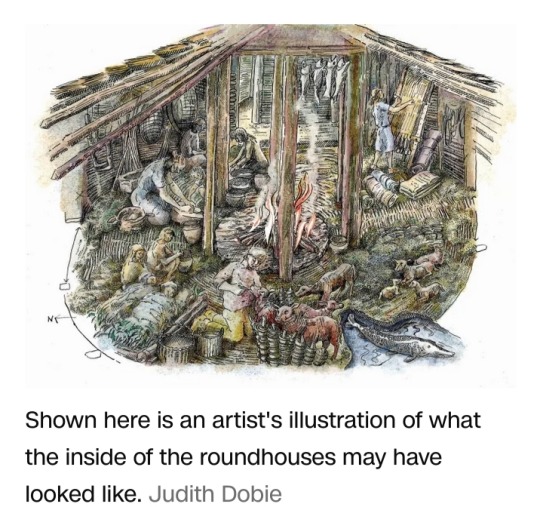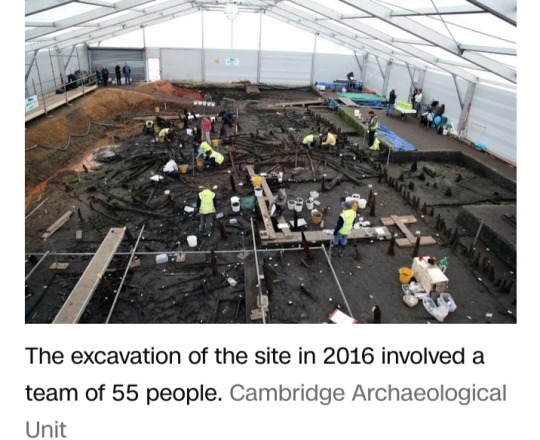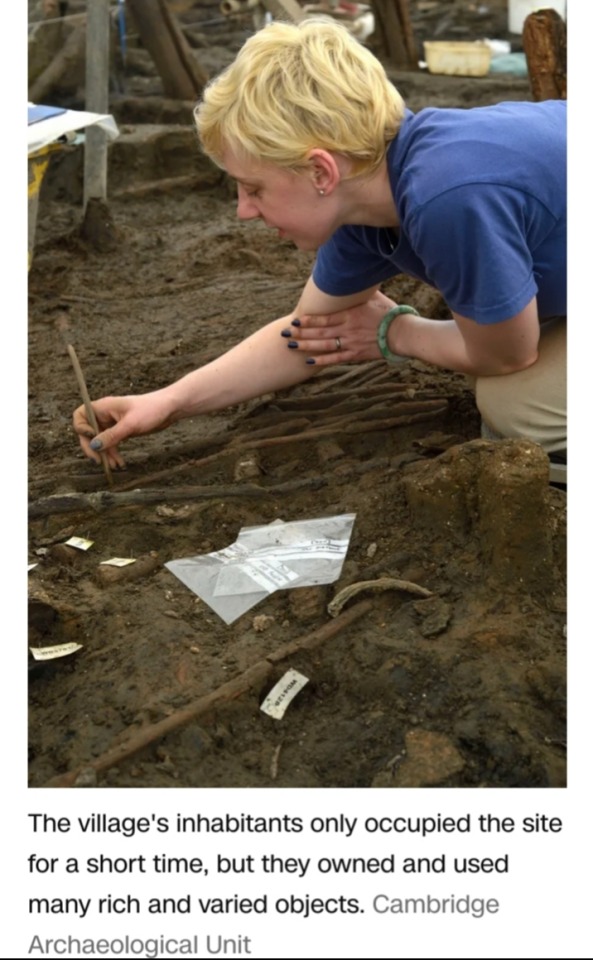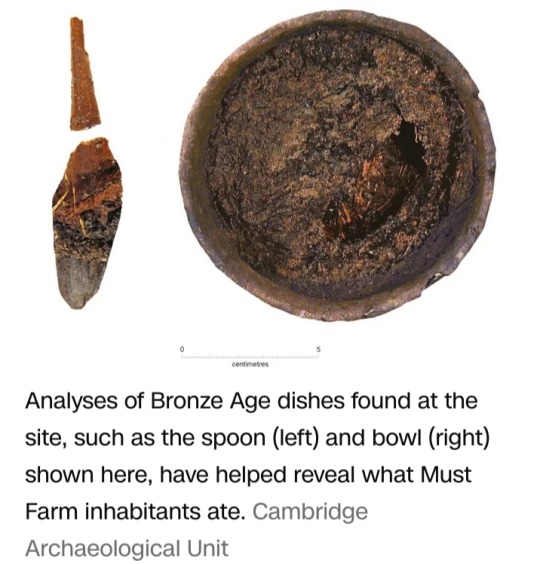#forensic archaeology
Explore tagged Tumblr posts
Text
The Role Of Forensic Archaeologists In Crime Scene Investigation
Forensic archaeologists are brought into service only when normal, usual investigative techniques are considered inadequate. This expertise in cases of buried remains, clandestine burials or complex scenes comes in very handy. By Vaishnavi Narreddy.
Continue reading The Role Of Forensic Archaeologists In Crime Scene Investigation
#Ethical considerations of Forensic Archaeologists#Forensic archaeologists#Forensic Archaeology#Law enforcement and Forensic Archaeology#Role of Forensic Forensic Archaeologists
2 notes
·
View notes
Text
*supersonic shrieking*
#forensic anthropology#osteology#skeletons#human remains#animal remains#human identification#animal identification#forensic archaeology#crime scene#investigations#bones
3 notes
·
View notes
Text
Series Spotlight: Dr. Ruth Galloway Mysteries by Elly Griffiths
The Dr. Ruth Galloway series is 15 books long. I can say I have listened to each book! The 15th and final book just came out in April.

I loved this series... except for the last book. It was written in a different style than the others and I didn't care for how it jumps from character to character with no warning.
Dr. Ruth Galloway is an eminent British forensic archaeologist, who is called upon by the police whenever they find bones they need help identifying or dating. There is an archaeological discovery featured in each of the books, along with at least one murder to be solved.
The plot of each novel is unique, but the cast of characters is pretty consistent. There is a lot of character development, especially in the later books.
The books don't quite qualify as cozies, yet compared to other crime novels, they are pretty tame. I appreciate that Griffiths is able to tell a story without a lot of sex and violence.
The 14th book (The Locked Room) does deal with Covid-19 and some of it hit pretty close to home, especially the fear and isolation the characters go through.
This series would make for great television and I hope to see a screen adaptation at some point!
The narrator for the audio version of each book is Jane McDowell and she does a superb job. She is Dr. Ruth Galloway!
Look for this series in print, audiobook, ebook and eaudiobook formats at LCPL.
See more of Brenna's recs
#book recommendations#book recs#book review#mystery#forensic archaeology#ruth galloway#elly griffiths#audiobook#booklr#bookblr#litblr#audiobook review#LCPL recs#brennasrecs
6 notes
·
View notes
Text
Field Schools? Scholarships? Resources?
Hey everyone,
I'm working with the director for the anthropology major at my university to put together a list of resources for undergrad students who are looking to do field schools in various anthro subfields.
If you have any recommendations, I'd love to hear about them!
We're looking for field schools and financial support for field schools in 1) archaeology, 2) biological/forensic anthropology, 3) ecological anthropology, 4) primatology, 5) ethnography, 6) linguistics, and other interdisciplinary opportunities.
If you've done a field school or know of one that you'd like to recommend, please do so!
Cheers,
Reid
57 notes
·
View notes
Text
they should let me have unlimited college majors. and it should cost me zero dollars and zero cents
#someone talk me out of changing my very reasonable and mainstream major to forensic or archaeological anthropology#someone tell me Not to study agriculture i am not going to be an agriculturalist i can’t get a degree just because i think it’s neat#podium
25 notes
·
View notes
Text

Neanderthal, Uviéu, Asturies, 22-03-24
#Neanderthal#Uviéu#Asturies#22-03-24#photography#photo#photographers on tumblr#aesthetic#aesthetics#prehistory#anthropology#archaeology#sculpture#forensic reconstruction
10 notes
·
View notes
Text
61 notes
·
View notes
Text




I made it through exams, thanks to the support of my wonderful friends who dragged me to coffee shops and the library for day long revision sessions :)
#studyblr#dark academia#forensic science#whoo only one year left#exams i had: ballistics biochemistry archaeology and digital forensics (very cool modules); + labs and course work based modules
18 notes
·
View notes
Text
I‘m at uni attending an entry seminar cause I fucked up my schedule very severely and need to take it to finish and I‘m screaming, everybody is using AI.
Even the professors are talking about how to correctly use and credit AI. There was a student presentation using an AI generated image for a reference. At least they credited it. But holy shit.
#and in another one people were putting the human remains pictures on social media#IN AN ARCHAEOLOGY FORENSIC ETHICS SEMINAR#where we had to read about things we DO NOT DO while handling remains#which. POSTING IT ON SOCIAL MEDIA. IS ONE OF THE NO NO THINGS#like yes it is fascinating but oh. Boy
5 notes
·
View notes
Text
Nutrient Foramen of Femur
Found around the midshaft level
On posterior level
Next to or on the linea aspera
Exits bone distally

Patreon
#studyblr#notes#my notes#anthropology#biological anthropology#bioanthropology#bioanthro#bioanth#bio-anthropology#human biology#human osteology#biology#bio#osteology#osteological analysis#skeletal system#forensics#forensic anthropology#human bones#bones#forensic science#science#bone analysis#human identification#bioarchaeology#bioarcheology#archaeology#archeology#biological science#life science
4 notes
·
View notes
Text
not to be obnoxious but like. you people are mad at those watcher guys for making you pay for a subscription service. but you were all able to look past the fact that they had an entire series where they just made jokes about actual real life true crime cases. that makes sense
#i fucking DESPISE buzzfeed unsolved#they were so fucking tone deaf with how they handled their true crime shit it made me so fucking angry#like you guys claim to be against the commercialising of true crime but not when two haha funny little guys do it yeah ??#fuck you all actually those dudes were always trash#and i kept feeling insane for being bothered by it whilst everyone else was worshipping them#they went to the scene of the keddie cabin murders which is a case i studied back when i did forensic archaeology#and bear in mind that the daughter of that family is still alive#and they stood there next to this site where a family and their friend were stabbed to death and fucking laughed and made jokes#and people didn’t care just because the jokes were never directly at the expense of the victims as if that makes it ok ???#that woman is still fucking alive. can you fucking imagine if she’d seen that like how that would feel#i’m fucking tired of teaching people basic human decency when it comes to true crime fuck you people#and don’t get me wrong what those guys are doing now IS scummy#but like ?? compared to fucking making their entire success of goofing about at real fucking crime scenes ???? they were always trash
10 notes
·
View notes
Text
Forensic Archaeology: An Overview
Archaeology is simply the study of past remains and it’s recovery, analysis for the information. In other words is the study of the ancient and recent human past through material remains that may aged up to millions of years. The application of ....
Continue reading Forensic Archaeology: An Overview
#Challenges in Forensic Archaeology#Famous Cases in Forensic Archaeology#Forensic Archaeology#Forensic Archealogy#Techniques and Methods in Forensic Archaeology#The Emergence of Forensic Archaeology#The Role of Forensic Archaeology in Cold Cases#what is forensic archealogy#what is forensic archeologist do#Who are Forensic Archaeologists
3 notes
·
View notes
Text
i wish my uni had a good linguistics program i love languages etc. but archaeology is neat too i guess. 😭 it is actually fun. i like digging holes. but linguistics <3
#you have to take a single linguistics class as part of the anth degree#and it was my favourite oneeee it was so fun.#my least favourites were human variation/evolution and bioarch. i just don’t care. peace and love on planet earth#some uni’s depending on if you go the bio/med/forensics route will give you a bachelor of thr sciences for anthropology but not this school!#as if it isn’t the most popular route in this program. arch/ethnography/linguistics get ignored esp the last two#at least you Can concentrate in archaeology.#but regardless of what you do you’re getting a bachelor of the arts
4 notes
·
View notes
Text
My forensic anthropology class today was a review for Friday’s midterm but also it’s St Valentine’s Day and my prof was making so many good puns about bones. Here are two of the best ones.
“My love for you is reaching a femur pitch”
“Will you be my palatine?”
Here are the bones in question:


3 notes
·
View notes
Text

(CNN) — It’s late summer 2,850 years ago. A fire engulfs a stilt village perched above a boggy, slow-moving river that weaves though the wetlands of eastern England.
The tightly packed roundhouses, built from wood, straw, turf, and clay just nine months earlier, go up in flames.
The inhabitants flee, leaving behind all their belongings, including a wooden spoon in a bowl of half-eaten porridge.
There is no time to rescue the fattened lambs, which are trapped and burnt alive.
The scene is a vivid and poignant snapshot, captured by archaeologists, of a once thriving community in late Bronze Age Britain known as Must Farm, near what’s now the town of Peterborough.
The research team published a two-volume monograph on Wednesday that describes their painstaking $1.4 million (£1.1 million) excavation and analysis of the site in the county of Cambridgeshire.
Described by the experts involved as an “archaeological nirvana,” the site is the only one in Britain that lives up to the “Pompeii premise,” they say, referencing the city forever frozen in time by the eruption of Mount Vesuvius in AD 79 that has yielded unparalleled information about ancient Rome.
“In a typical Bronze Age site, if you’ve got a house, you’ve probably got maybe a dozen post holes in the ground and they’re just dark shadows of where it once stood.
If you’re really lucky, you’ll get a couple of shards of pottery, maybe a pit with a bunch of animal bones.
This was the complete opposite of that process. It was just incredible,” said Chris Wakefield of the Cambridge Archaeological Unit at the University of Cambridge, an archaeologist and member of the 55-person team that excavated the site in 2016.
"All the axe marks had been used to shape and sculpt the wood. All of those looked fresh, like they could have been done last week by someone,” Wakefield added.
The remarkably preserved condition of the site and its contents enabled the archaeological team to draw comprehensive new insights into Bronze Age society — findings that could overturn the current understanding of what everyday life was like in Britain during the ninth century BC.

Must Farm domesticity — and a mystery
The site, which dates to eight centuries before Romans arrived in Britain, revealed four roundhouses and a square entranceway structure, which stood approximately 6.5 feet (2 meters) above the riverbed and were surrounded by a 6.5-foot (2-meter) fence of sharpened posts.
The archaeologists believe the settlement was likely twice as big. However, quarrying in the 20th century destroyed any other remains.
Though charred from the fire, the remaining buildings and their contents were extremely well preserved by the oxygen-starved conditions of the fens, or wetlands, and included many wooden and textile items that rarely survive in the archaeological record.
Together, traces of the settlement paint a picture of cozy domesticity and relative plenty.
The researchers unearthed 128 ceramic artifacts — jars, bowls, cups and cookware — and were able to deduce that 64 pots were in use at the time of fire.
The team found some stored pots neatly nested.

Textiles found at the site made from flax linen had a soft, velvety feel with neat seams and hems, although it wasn’t possible to identify individual pieces of clothing.
Wooden artifacts included boxes and bowls carved from willow, alder and maple, 40 bobbins, many with threads still attached, various tools, and 15 wooden buckets.
“One of those buckets … on the bottom of it were loads and loads of cut marks, so we know that people living in that Bronze Age kitchen when they needed an impromptu chopping board, were just flipping that bucket upside down and using that as a chopping surface,” Wakefield said.
“It’s those little moments that build together to give a richer, fuller picture of what was going on.”

The circumstances of the event that brought it all to a halt are still a bit of a mystery.
The researchers believe the fire took place in late summer or early autumn because skeletal remains of the lambs kept by one household showed the animals, typically born in spring, were three months to six months old.
However, what exactly caused the devastating fire remains unclear. The blaze could have been accidental or deliberately started.
The researchers uncovered a stack of spears with shafts over 10 feet (3 meters) long at the site, and many experts think that warfare was common in the time period.
The team worked with a forensic fire investigator but ultimately couldn’t identify a specific “smoking gun” clue pointing to the cause.
“An archaeological site is a lot like a jigsaw puzzle. At a typical site you have 10 or 20 pieces out of 500,” Wakefield said.
“Here, we had 250 or 300 pieces and we still couldn’t get the complete picture on how this big fire broke out.”
Mike Parker Pearson, a professor of British later prehistory at the Institute of Archaeology at University College London, described both the report and the site “as exceptional.” He wasn’t involved in the research.
“The fire may have been disastrous for the inhabitants but it is a blessing for archaeologists, a unique snapshot of life in the Bronze Age,” he said via email.
Upending ideas about Bronze Age society
The contents across the four preserved houses were “remarkably consistent."
Each one had a tool kit that included sickles, axes, gouges, and handheld razors used to cut hair or cloth.
With almost 538 square feet (50 square meters) of floor space in the largest, each of the dwellings appeared to have distinct activity zones comparable to rooms in a modern home.
“By plotting the positions of all these finds — pots, loomweights, tools, and even sheep droppings, the archaeological team have reconstructed the houses’ internal use of space,” Parker Pearson noted.
“The kitchen area was in the east, the storage and weaving area in the south and southeast with the penning area for lambs, and the sleeping area in the northwest, though we don’t know where the doorway was for each house.”
Not all the items were of practical use, such as 49 glass beads plus others made of amber.
Archaeologists also unearthed a woman’s skull, smooth from touch, possibly a keepsake of a lost loved one.
Some of the items the researchers found will go on display starting April 27 in an exhibition titled “Introducing Must Farm: A Bronze Age Settlement” at the Peterborough Museum and Art Gallery.

Lab analysis of biological remains revealed the types of food the community once consumed.
A pottery bowl imprinted with the finger marks of its maker held a final meal — a wheat grain porridge mixed with animal fat.
Chemical analyses of the bowls and jars showed traces of honey along with deer, suggesting the people who used the dishes might have enjoyed honey-glazed venison.
Ancient excrement found in waste piles below where the houses would have stood showed that the community kept dogs that fed on scraps from their owners’ meals.
And human fossilized poop, or coprolites, showed that at least some inhabitants suffered from intestinal worms.
The waste piles, or middens, were one line of evidence that showed how long the site was occupied, with a thin layer of refuse suggesting the settlement was built nine months to a year before it went up in flames.
"Two other factors supported that line of reasoning," Wakefield said.
“The second was that a lot of the wood that was used in the construction was unseasoned, it was still effectively green, it hadn’t been long in position,” he said.
“The third one is that we have a lack of the kind of insects and animals that are associated with human habitation."
"It wouldn’t be long before beetles would worm (in) … but there’s no evidence of any of that in any of the 18,000 plus timbers.”
The fact that the site, with its rich and varied contents, was in use for only a year upended the team’s preconceived “visions of everyday life” in the ninth century BC.
It may suggest that Bronze Age societies were perhaps less hierarchical than traditionally thought, according to the 1,608-page report.
“We are seeing here not the accumulation of a lifetime, but just a year’s worth of materials,” the authors noted in the report.
“It suggests that artefacts such as bronze tools and glass beads were more common than we often imagine and that their availability may not in fact have been restricted.”

#Must Farm#Late Bronze Age#Late Bronze Age Britain#Cambridgeshire#Peterborough#archaeological nirvana#Pompeii premise#Mount Vesuvius#AD 79#Bronze Age#Chris Wakefield#Cambridge Archaeological Unit#University of Cambridge#9th century BC#Britain's Pompeii#archaeology#archaeologists#ceramic artifacts#wooden artifacts#forensic fire investigator#archaeological site#Institute of Archaeology#University College London#Peterborough Museum and Art Gallery#artefacts#Mike Parker Pearson#history
5 notes
·
View notes
Text
I’ve decided that I’m going to get my certification in forensic anthropology (lab work) while waiting to hear back from grad school. I can absolutely do forensic-based work with my background in archaeology, but to do in-depth lab work would require a certificate.
Plus it would be a cool skill to have anyways. My work with NAGPRA requires me to have basic forensics, but I could do more in the field… and help fill in gaps at work.
Man, I’m rambling a lot. I think I’m processing. Anyways, I’m excited😎😎😎
#I do historical material goods with my background in archaeology#I can do basic forensics with NAGPRA but a certificate will allow me to do more AND get paid more😎😎#MAN I AM EXCITED#mystery anon#off topic#I am an anthropologist#I am an archaeologist
12 notes
·
View notes